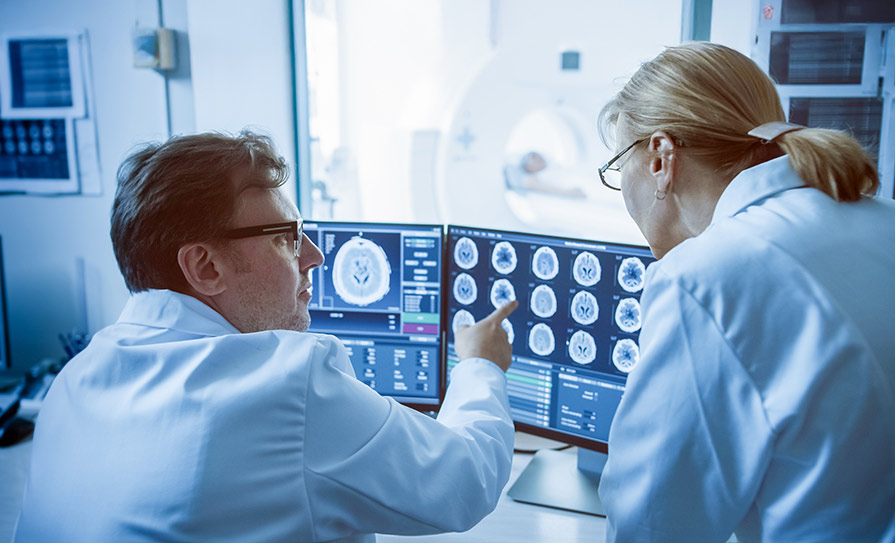David Lynch talks to Programme Director of the National Office for Traffic Medicine, Prof Des O’Neill, about recent developments in traffic medicine.
The rise in the age for routine medical certification of drivers from 70 to 75 years has been “welcomed” by the Programme Director of the National Office for Traffic Medicine (NOTM).

Prof Des O’Neill, Consultant Physician in Geriatric and Stroke Medicine, Tallaght University Hospital, and Professor of Medical Gerontology at Trinity College Dublin, told the Medical Independent (MI) that the updated guidelines that cover medical fitness to drive “continue to support drivers and healthcare professionals with the highest level of modern research and evidence to support safe driving and mobility”.
“This [research]… supports the welcome raise in the age of routine medical certification of drivers from 70 to 75,” according to Prof O’Neill.
On 28 April, the Road Safety Authority (RSA) in association with the NOTM announced the publication of the 2022 update of the Sláinte agus Tiomáint Medical Fitness to Drive Guidelines for group 1 and group 2 drivers.
A new information leaflet on Medical Assessment for Fitness to Drive was also published. This new leaflet expands on the existing leaflets that have been developed to provide information and support for drivers with medical conditions. Previous leaflets provided information about driving with epilepsy; sleep apnoea; cardiac conditions; alcohol problems; stroke; vision problems; short-term illnesses/injuries; and general fitness to drive. The leaflet is updated annually.
An advice leaflet for driving during pregnancy has also been developed. The leaflets provide guidance on what drivers with medical and other conditions should do to help them drive safely, including managing and monitoring their condition, seeking advice and support from their doctor and, where required, notifying the National Driver Licence Service (NDLS) about their condition.
“I think one of the areas that we have been particularly interested in, in terms of evidence, is… routine medical certification for older drivers,” Prof O’Neill told MI.
“This [introduction of routine medical certification] originally arose at a time when there was poor information and I think on the basis of a misguided belief that older drivers were somehow more dangerous, [so] they asked for medical certification at 70.”
However, Prof O’Neill said that recent research has led to a reconsideration of the issue. Comparisons between jurisdictions that either have or have not routine medical certification for older drivers have shown that the latter have lower numbers of older people dying in traffic accidents.
“It seems really counter-intuitive, but it is not,” he said, adding that older drivers are generally very responsible and the need for a medical certificate is a “barrier and a cost” to driving for them.
“For example, the medical screening in Ireland is not covered by the medical card so your GP might do you a favour, or your GP might ask you for €50, so it is a barrier to continuing driving.
“But what we know from those other jurisdictions is that it seems to put older people off driving and they become vulnerable road users, such as pedestrians or [on] public transport, and then they are more likely to get injured or die.”
“So we have published on this quite a while back; it’s an area of research of mine from the early 1990s. We recommend to the Government that we should remove this barrier, and I think they’ve decided to take the first stage of this… but the general public have to come to terms with this, because I think some of the general public probably still harbour negativity about older drivers.”
Prof O’Neill said that the new age for routine medical certification is 75 and he thinks “this can be reviewed thereafter”.
“It’s not just a question of some kind of mad liberalisation. Ten years ago when this [routine medical certification] was in place and we [the NOTM] weren’t there, there were no good guidelines; there were no education programmes; there were no patient leaflets; there were no set-ups for on-road driving assessment; there were no itemised self-declarations on the renewal form; and since then we have put all of those in place.”
Prof O’Neill said the office has developed a framework “within which doctors and drivers and others can feel more secure in giving appropriate advice. I think all branches of the healthcare and medical profession have been fantastically engaged and involved in supporting this approach in terms of a better framework.”
Definition
The term ‘traffic medicine’ has evolved to embrace all the disciplines, techniques, and methods aimed at reducing the harm that traffic crashes inflict on human beings. This includes medical and surgical care provided to crash victims; improving vehicle crashworthiness; developing better safety belts and brakes; designing safer roads and traffic control systems; training and educating drivers; research into the biomechanics and epidemiology of traffic crashes; and developing and enforcing traffic safety policies.
The best-known element of traffic medicine is the need for medical certification showing fitness to drive.
The NOTM was established in 2011 as a joint initiative by the RCPI and the RSA to manage the development of medical fitness to drive guidelines and the development of traffic medicine policy. The programme work is under the directorship of Prof O’Neill together with the RCPI working group on traffic medicine, consisting of 37 healthcare and other professional organisations.
“The office is now into its 10th year,” Prof O’Neill told MI. “It’s been a very successful programme, very unusual in global terms with its strong emphasis on education not only of [medical] practitioners, but also the general public.” He points to the production of leaflets, media campaigns, and information stands at public events as examples of public outreach conducted by the office.
“We are also backed up with a lot of research, we had our research study day recently [5 May],” he added. “There was nearly 100 people [attending online] and we had presentations from America, Ireland, and other places,” he said.
“Without being boastful or hubristic, it has become a model for other countries with a lot of interest from other countries,” he noted.
“We have developed a certificate in traffic medicine for doctors and occupational therapists, one of the first in the world. We have developed a certificate in road safety and public heath for other road safety professionals… we update the guidelines every year. We were involved with a number of different [international] consortia to develop the evidence for traffic medicine.”
A recent RCPI research study day had input from a number of specialties, including neurology. Prof O’Neill makes the point that traffic medicine is influenced by many specialties beyond gerontology, with everything from cardiology to paediatrics influencing the field. “Basically over 30 disciplines have been involved with us,” he said.
He said the global evidence base for traffic medicine is “definitely building”.
However, he added that “compared to its importance to people’s everyday lives” traffic medicine is still “under researched, but the research is improving year on year”.
Future
Prof O’Neill said the area of alcohol use and driving is of concern to the NOTM and will be the subject of focus in the coming years.
“Our target over the next few years is for people to think, perhaps, more strongly about alcohol use and alcohol use disorders and I see them as a target for improvement in how we try to advise people and how we try to provide therapies,” he said.
Prof O’Neill said that he thinks people have a “blind spot” about alcohol use disorders in practice.
“They tend to kind of almost not see it as a medical condition where people can be diagnosed and treated and supported,” he said. “That’s going to be our big focus in the next few years.”
“People seem to get very concerned about older people and Alzheimer’s, [in regards to driving], when in fact their real concerns should be alcohol and substance use disorders.”
He said that such a focus “fits in with the RCPI who have been strong on the Public Alcohol Bill”.
Changes
The medical changes in the new edition of the fitness to drive guidelines include: “Clarification of epilepsy guidelines for group 1 licence holders. Detailed guidelines included for group 1 drivers with supratentorial metastatic brain disease who are receiving immunotherapy or other molecular targeted treatment.”
Advice for GPs on the guidelines can be found at www.ndls.ie/medical-fitness/advice-for-gps.html#medical-fitness-guidelines-and-forms













Leave a Reply
You must be logged in to post a comment.